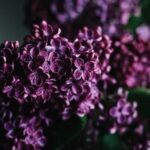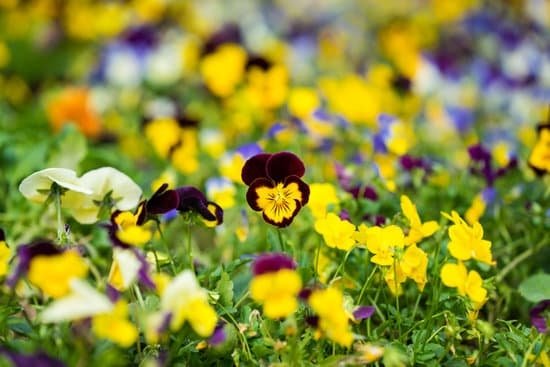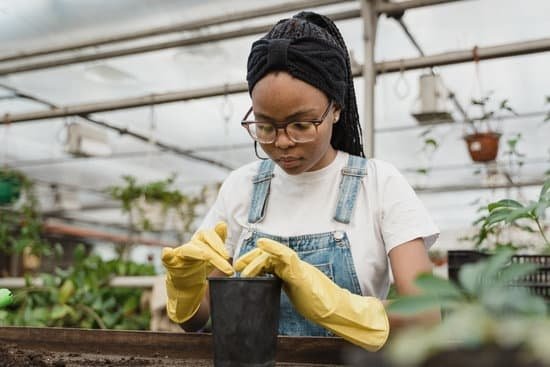Are you looking for creative and innovative indoor gardening ideas to bring a touch of greenery into your home? Indoor gardening has become increasingly popular in recent years, as more people seek to enjoy the benefits of growing plants and herbs within the comfort of their own living spaces.
In this article, we will explore the advantages of indoor gardening and provide a comprehensive guide to help you get started on your own indoor garden. From choosing the right plants to creative container ideas, essential tools, and maintenance tips, we’ve got you covered with everything you need to know about indoor gardening ideas.
The benefits of indoor gardening extend beyond just adding aesthetic appeal to your home. It also offers a range of mental and physical health benefits, from reducing stress and improving air quality to providing fresh herbs for cooking.
With the right selection of plants and some creativity, indoor gardening can transform any room into a lively and vibrant space. Whether you’re a seasoned gardener or new to the hobby, exploring the world of indoor gardening can be an exciting and rewarding experience.
In the following sections, we will delve into various aspects of indoor gardening, including selecting the right plants based on their care requirements and environmental needs, exploring creative container ideas to display your indoor garden in style, essential tools for maintenance, design tips to enhance your home decor with greenery, expert advice on caring for your plants, addressing common challenges that come with indoor gardening.
And finally, showcasing real-life success stories and stunning examples of unique indoor garden setups for inspiration.
So let’s get started on this journey into the wonderful world of indoor gardening.
Choosing the Right Plants
When it comes to indoor gardening, selecting the right plants is crucial for success. Not all plants thrive indoors, so it’s important to consider factors such as light availability, space constraints, and care requirements before making your selections.
Light Requirements
One of the most important factors to consider when choosing indoor plants is their light requirements. Some plants thrive in low-light conditions, while others require bright, direct sunlight. Consider the natural light sources in your home and choose plants that are suited to those conditions. For example, snake plants and pothos thrive in low light, while succulents and cacti require bright, direct sunlight.
Space Constraints
Another important consideration is the amount of space you have available for your indoor garden. If you have limited space, consider compact plants or vertical gardening options to make the most of your available area. Hanging planters and wall-mounted pots can also be great solutions for small spaces.
Care Requirements
Finally, take into account the care requirements of each plant you’re considering. Some plants are more high-maintenance and require frequent watering, pruning, and fertilizing, while others are more forgiving and can withstand occasional neglect. Consider your lifestyle and schedule when choosing plants with specific care needs.
By carefully considering these factors when choosing your indoor plants, you can create a thriving indoor garden that enhances your living space and brings nature indoors.
Creative Container Ideas
When it comes to indoor gardening, one of the most exciting aspects is finding creative and unique containers to display your plants. Traditional pots are always a classic choice, but there are also plenty of upcycled and unconventional options that can add a touch of style and personality to your indoor garden.
One popular trend in indoor gardening is using hanging planters or wall-mounted containers to save space and create a dynamic visual display. This is especially useful for those with limited floor space who still want to enjoy the benefits of indoor gardening. Hanging gardens not only look stunning but also add a sense of depth and dimension to any room.
For those looking to add an eclectic touch to their indoor garden, upcycled containers such as old tea tins, mason jars, or vintage crates can be repurposed into charming planters. Not only does this contribute to sustainability by giving new life to old items, but it also adds a unique and personal touch to your indoor garden.
In addition, choosing containers that complement your home decor is crucial for creating visually appealing indoor garden displays. Whether you prefer modern, minimalist planters for a sleek look or colorful, quirky containers for a more playful vibe, there are endless options available to suit every style and aesthetic preference.
| Indoor Gardening Container Ideas | Description |
|---|---|
| Hanging Planters | Save space and create a dynamic visual display with hanging gardens. |
| Upcycled Containers | Repurpose old items like tea tins or mason jars for a sustainable and unique touch. |
| Home Decor Matching Containers | Choose planters that complement your home decor style for visually appealing displays. |
Essential Indoor Gardening Tools
When it comes to maintaining a thriving indoor garden, having the right tools and supplies is essential. Here is a comprehensive list of items that every indoor gardener should have on hand:
1. Watering can: A good quality watering can with a narrow spout is essential for delivering water directly to the soil without splashing the foliage.
2. Pruning shears: Sharp pruning shears are necessary for trimming and shaping plants, as well as removing dead or diseased foliage.
3. Potting mix: High-quality potting mix specifically formulated for indoor plants will provide the right balance of nutrients and drainage.
4. Fertilizer: Indoor plants often need supplemental feeding since they are confined to pots. Choose a fertilizer specifically designed for indoor use.
5. Plant labels: Keeping track of the different types of plants in your indoor garden is important for proper care. Use plant labels to identify each plant and its specific care requirements.
6. Misting spray bottle: Many indoor plants benefit from regular misting to increase humidity levels, especially during dry winter months.
7. Gardening gloves: Protect your hands while tending to your indoor garden with a pair of durable gardening gloves.
8. Grow lights: Depending on the natural light available in your home, you may need to supplement with grow lights to ensure that your plants receive adequate light for healthy growth.
By having these essential tools and supplies on hand, you’ll be better equipped to maintain a thriving indoor garden and keep your plants healthy and happy.
Indoor Garden Design Tips
When it comes to indoor gardening, creating visually appealing displays that complement your home decor is just as important as choosing the right plants. A well-designed indoor garden can not only bring life and color into your home but also add to the overall aesthetic of your living space. Here are some tips on how to create stunning indoor garden displays that blend seamlessly with your home decor.
Consider Your Home’s Aesthetic
Before diving into designing your indoor garden, take a moment to consider the existing aesthetic of your home. Think about the color scheme, the style of furniture, and any existing decorative elements. This will help you decide on the type of plants and containers that will best complement your space. For example, if you have a modern minimalist decor, sleek and simple planters with low-maintenance succulents or air plants may be the best choice.
Use a Variety of Plants and Containers
To create an interesting and dynamic indoor garden display, consider using a variety of plants and containers. Mix and match different types of foliage, textures, and colors to add visual interest to your indoor garden. You can also get creative with containers – use hanging planters, terrariums, wall-mounted pots, or even upcycled items like mason jars or old teacups for a unique touch.
Create Focal Points
Incorporate focal points into your indoor garden design to draw attention to specific areas or plants. This could be a larger statement plant placed on a pedestal or an arrangement of smaller plants grouped together to create a visually striking display. By creating focal points within your indoor garden, you can guide the eye and highlight the most captivating elements of your green oasis.
By taking these design tips into consideration, you can create an indoor garden that not only thrives but also complements and enhances the beauty of your home decor. Remember that indoor gardening ideas are personal – don’t be afraid to experiment with different plant combinations and container arrangements until you find a design that brings joy and harmony to your living space.
Maintenance and Care
Indoor gardening is a fantastic way to bring the beauty of nature inside your home. But to ensure that your indoor garden thrives, proper maintenance and care are crucial. From watering to grooming, here are some expert tips to help your indoor plants grow at their best.
First, let’s talk about watering. One of the most common mistakes in indoor gardening is either overwatering or underwatering plants. To avoid this, it’s important to understand the specific water needs of each plant species in your indoor garden. Some plants prefer consistently moist soil, while others need to dry out between waterings. Investing in a moisture meter can be incredibly helpful in determining when it’s time to water your plants.
Next, feeding your indoor plants is essential for their growth and overall health. While some potting soils contain nutrients that can sustain plants for several months, eventually they will need supplemental feeding. Choose a well-balanced liquid fertilizer and follow the manufacturer’s instructions for the frequency and dosage suitable for your plants.
In addition to watering and feeding, grooming your indoor plants is also important. Regularly remove dead or yellowing leaves, as well as spent flowers or stems. Not only does this improve the appearance of your indoor garden, but it also helps prevent the spread of diseases and pests.
Ensuring that these basic needs are met will set the stage for optimal growth and overall success in maintaining an indoor garden.
| Maintenance Tips | Details |
|---|---|
| Watering | Understand specific water needs of each plant species; Use a moisture meter; Avoid overwatering or underwatering |
| Feeding | Choose a well-balanced liquid fertilizer; Follow manufacturer’s instructions for frequency and dosage |
| Grooming | Remove dead or yellowing leaves, spent flowers, or stems regularly; Improves appearance and prevents spread of diseases and pests |
Dealing With Common Indoor Gardening Challenges
When it comes to indoor gardening, there are several challenges that gardeners may face, including dealing with pests, diseases, and light deficiency. However, with the right knowledge and tools, these challenges can be effectively addressed to maintain a thriving indoor garden.
Pests can easily find their way into indoor gardens and wreak havoc on your plants if not properly controlled. Here are some common indoor gardening pests to watch out for:
- Aphids
- Fungus gnats
- Spider mites
- Mealybugs
To combat these pests, consider using natural pest control methods such as introducing beneficial insects like ladybugs or using neem oil. Additionally, regularly inspecting your plants for signs of infestation can help catch pest problems early on.
In addition to pests, indoor plants are also susceptible to diseases such as powdery mildew and root rot. To prevent the spread of diseases in your indoor garden, practice good plant hygiene by removing dead or infected foliage and ensuring proper air circulation around your plants.
Lastly, one of the most common challenges in indoor gardening is light deficiency. To ensure that your plants receive adequate light for healthy growth, consider the following tips:
- Choose plants that thrive in low-light conditions if natural sunlight is scarce in your home.
- Utilize grow lights to supplement natural light and provide optimal conditions for plant growth.
- Rotate your plants regularly to ensure even exposure to light.
By addressing these common indoor gardening challenges with the right strategies and techniques, you can enjoy a flourishing and healthy indoor garden all year round.
Showcasing Success
In conclusion, indoor gardening is not only a growing trend but also a rewarding activity for plant enthusiasts. The benefits of indoor gardening are numerous, from improving air quality to reducing stress and adding a touch of nature to your home. By choosing the right plants based on light, space, and care requirements, you can create a thriving indoor garden that complements your lifestyle and home decor.
Creative container ideas provide an opportunity for gardeners to display their indoor plants in unique and stylish ways. From traditional pots to upcycled containers, there are endless possibilities to showcase your green thumb. Additionally, essential indoor gardening tools and supplies are necessary for maintaining a healthy indoor garden. Watering cans, fertilizers, and pruning shears are just a few of the essential items needed for optimal plant growth.
To create visually appealing indoor garden displays that complement your home decor, consider incorporating design tips such as color coordination and varying plant heights. Lastly, maintaining and caring for your indoor plants is crucial for their overall health and growth. Expert tips on watering schedules, feeding routines, and grooming practices will ensure the success of your indoor garden.
In dealing with common challenges such as pests, diseases, and light deficiency in indoor environments, knowing how to address these issues is essential for the overall well-being of your plants. Overall, showcasing successful real-life indoor gardening stories serves as inspiration for those looking to embark on their own journey of creating stunning indoor gardens. With the right knowledge and tools at hand, anyone can achieve beautiful results with their indoor gardening ideas.
Frequently Asked Questions
What Is the Best Indoor Garden for Beginners?
The best indoor garden for beginners is a simple container garden. Start with easy-to-grow plants like herbs or small vegetables. All you need is a sunny window, some potting soil, and the right containers.
How Do You Garden Indoors in a House?
Indoor gardening in a house requires finding the right spot with good sunlight, whether it’s a window sill or under grow lights. Choose the right size pots, use high-quality soil, and remember to water and fertilize regularly.
What Does Every Indoor Gardener Need?
Every indoor gardener needs the basics: good quality potting mix, appropriate containers (with drainage holes), watering can or spray bottle, fertilizer, and proper lighting if natural light is limited. Additionally, having essential gardening tools like pruners and trowels will also be beneficial.

Welcome to my gardening blog! I am passionate about plants and enjoy sharing my knowledge and experiences with others. In this blog, I will write about everything related to gardening, from tips on how to get started to updates on my own garden projects.





